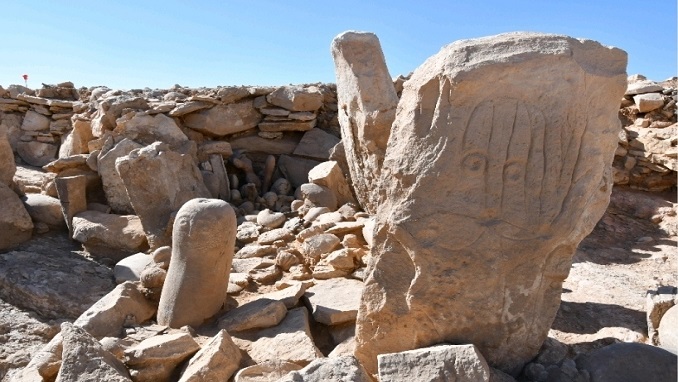
Archaeologists discovered a 9,000-year-old shrine and ritual complex at a remote Neolithic site in Jordan’s desert, making it what is thought to be the earliest known large human-built structure to ever be uncovered.
The ritual complex was found in a Neolithic campsite in Jordan’s eastern desert near large structures known as “desert kites,” which are mass traps that experts believe were used to hunt and corral wild gazelles. The shrine is from the Stone Age, and was excavated last year.
The traps included two or more long stone walls that come together towards an enclosure. They have been found scattered across Middle Eastern deserts, including within Turkey, Kazakhstan, Saudi Arabia, and Syria.
But this site is unique for multiple reasons. The site has amazing preservation, with almost everything intact even after 9,000 years. It has been halted as an unprecedented and spectacular discovery and is believed to date back to 7000 B.C.
Within the shrine, two standing stones were carved with anthropomorphic figures. One figure is accompanied by a representation of the “desert kite,” as well as an altar, hearth, marine shells, and a drawing of the gazelle trap itself.
The researchers’ team is made up of Jordanian and French archaeologists, from Al Hussein Bin Talal University and the French Institute of the Near East.
In a statement, they said that the shrine sheds a whole new light on the symbolism and artistic expression of the Neolithic population, as well as their spiritual culture.
The site is close to the traps, which suggests the inhabitants were specialized hunters and that the gazelle grape was central to their cultural, economic, and symbolic life. Researchers and experts believe that the symbolism was meant to invoke supernatural forces to secure successful hunts and an abundance of prey.




Be the first to comment